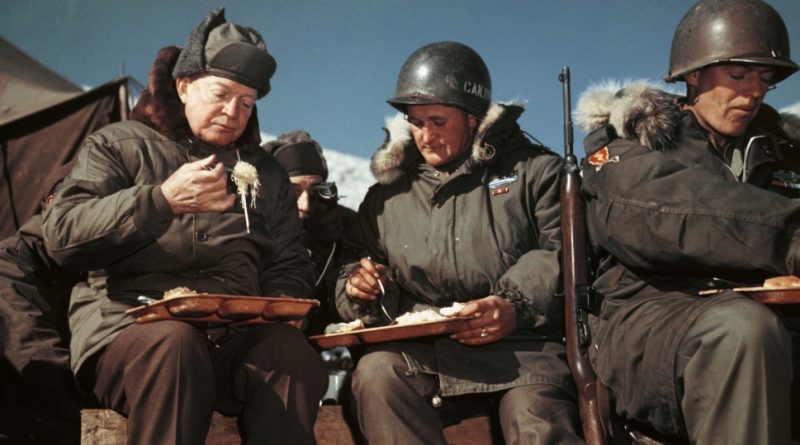November 29 in U.S. military history
1804: Marine Corps 1st Lt. Presley O’Bannon, William Eaton, Navy Midshipman George Mann, and seven Marines land at Alexandria, Egypt with the intention of overthrowing the ruler of Tripoli. Five months – and 600 miles – later, the men would arrive in the port city of Derne and defeat the Bashaw’s forces.
1890: At West Point, N.Y., the visiting U.S. Naval Academy beats the U.S. Military Academy 24-0 in the first-ever Army–Navy football game.
1929: U.S. Navy Commander Richard E. Byrd Jr. makes the first-ever flight over the South Pole. Byrd – a future rear admiral and recipient of the Medal of Honor for his 1926 flight over the North Pole – serves as navigator for the South Pole flight. His companions include pilot Bernt Balchen, radio operator Harold June, and photographer Ashley McKinley. The team crosses the Pole in a modified Ford tri-motor airplane.
1941: The Japanese decide that the terms issued by the United States are unacceptable and that Japan must go to war. Meanwhile, the passenger ship Lurline sends a radio signal that they have spotted Japanese fleet in the North Pacific, heading East.
1944: The submarine USS Archerfish sinks the Japanese carrier Shinano, the largest warship sunk by a submarine during World War II, off Honshu. In the Philippines, the battleship USS Maryland and two destroyers are heavily damaged by kamikaze attacks.
In France, for nearly two weeks Staff Sgt. Andrew Miller engages in a “series of heroic events,” to include single-handedly silencing multiple machine gun positions; killing or wounding dozens of German soldiers, and capturing scores more. Then on Nov. 29 1944, Staff Sgt. Miller’s platoon was pinned down by German fire. He led a charge that smothered the Germans, but the attack cost Miller his life – earning the Medal of Honor posthumously.
1952: Newly elected president Dwight Eisenhower fulfills his campaign promise of visiting Korea in hopes of ending the conflict (featured image). Upon taking office, Pres. Eisenhower informs the Chinese that he would unleash Nationalist Chinese forces in Taiwan against Communist China unless peace negotiations progressed. An armistice was signed in July of 1953.
1968: Viet Cong High Command issues a directive to its forces to wage a new assault to “utterly destroy” US and South Vietnamese forces, specifically targeting the highly effective Phoenix counterinsurgency program.
